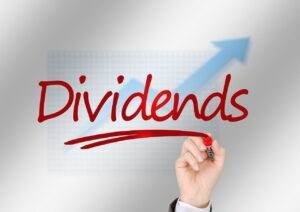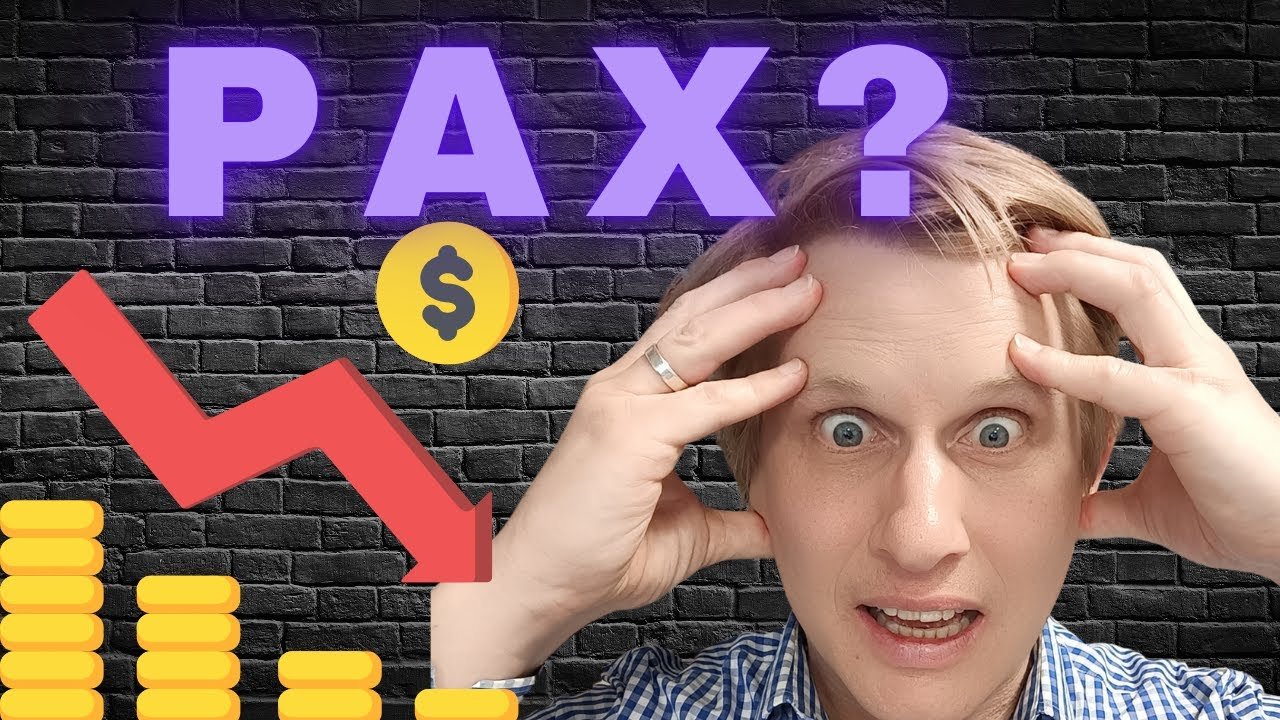High-Yield Dividend Stocks: Risks And Opportunities
Ah, high-yield dividend stocks. The siren’s call of the investment world. Who wouldn’t want to receive a steady stream of income without lifting a finger? It’s like having a money tree in your backyard, right? Well, not quite.
Before you start dreaming about all the exotic vacations you’ll take with your newfound wealth, let’s take a closer look at the risks and opportunities of high-yield dividend stocks.
As Warren Buffett once said, ‘Risk comes from not knowing what you’re doing.’ So, let’s dive in and explore what it really means to invest in these tantalizing securities.
But be warned, it may not be as easy as it seems.
What Are High-Yield Dividend Stocks?
High-yield dividend stocks are a type of investment that offers investors the potential for income and growth. They are companies that pay out a significant portion of their earnings to shareholders in the form of dividends, often with yields higher than the average stock. Examples often include companies like Business Development Companies (BDCs), which must pay out most of the earnings as dividends.
These stocks can provide an attractive source of passive income, making them popular among investors looking for a steady stream of cash flow. However, high-yield dividend stocks also come with risks. The higher yield may be due to the company’s financial struggles or other factors that make its future uncertain.
Additionally, as interest rates rise, these stocks may become less attractive to investors seeking safety and stability. Despite these risks, high-yield dividend stocks can still be a smart investment choice for those willing to do their research and carefully select companies with strong fundamentals.
By balancing the potential returns with the potential risks, investors can find opportunities for long-term growth and income through high-yield dividend stocks.

Advantages Of Investing In High-Yield Dividend Stocks
As we discussed in the previous section, high-yield dividend stocks offer investors a chance to earn significant returns through regular payouts. However, investing in high-yield dividend stocks is not without risks. It is essential to weigh the risks versus the rewards before investing in such stocks.
Market fluctuations are among the most significant risks associated with high-yield dividend stocks. The stock market can be volatile at times, impacting the performance of these stocks. While they may provide higher returns than other investments, they are also more susceptible to short-term market movements. Therefore, it is crucial to consider your long-term investment goals while investing in these types of stocks.
Investing in high-yield dividend stocks can offer several long-term benefits despite the potential risks. One such benefit is the option for dividend reinvestment. This allows you to reinvest your dividends back into the company, which can increase your overall returns over time. Additionally, diversification options are available for investors who want to minimize their risk exposure while still earning passive income from dividends.
As we have seen, both advantages and risks are associated with high-yield dividend stocks. While they offer higher returns than other investments, they are also more susceptible to market fluctuations. However, with proper planning and diversification options, investing in these stocks can provide significant long-term benefits for investors seeking financial freedom.
In the subsequent section, we will explore some of the disadvantages of investing in high-yield dividend stocks and how you can avoid them while still achieving your investment goals.
Disadvantages Of Investing In High-Yield Dividend Stocks
Investing in high-yield dividend stocks may seem like a no-brainer to those seeking passive income. However, it is important to consider the potential risks of this type of investment.
One significant disadvantage is the volatility of the market. High-yield dividend stocks are often found in sectors such as utilities and real estate, which can be affected by changes in interest rates and economic conditions.
Another risk associated with high-yield dividend stocks is sustainability. Some companies may have a history of paying out high dividends but may not have the financial stability to maintain them long-term. This can lead to dividend cuts, which can cause a drop in stock value and negatively impact investors.
In addition, market fluctuations can affect the performance of high-yield dividend stocks. When the market experiences downturns, investors may sell off their shares, causing prices to drop even further.
It is important to remember that investing always carries some risk, but understanding these factors can help investors make informed decisions when considering high-yield dividend stocks.
– High-risk investments should be evaluated carefully before committing any capital.
– Past performance does not guarantee future results.
– Always diversify your portfolio to minimize risk.
As Warren Buffet famously said, ‘Risk comes from not knowing what you’re doing.’ It’s essential for investors to do their due diligence when considering high-yield dividend stocks. While they may offer attractive returns, there are potential downsides that cannot be ignored. In the next section, we will discuss factors to consider when choosing these types of investments.

Factors To Consider When Choosing High-Yield Dividend Stocks
Choosing high-yield dividend stocks can be compared to a game of chess. Just as in chess, where every move counts and one wrong move can lead to defeat, selecting the right stocks requires a strategic approach.
Investors must carefully analyze market volatility, industry trends, and diversification techniques to succeed while conducting risk assessment.
Market volatility is an essential factor to consider when choosing high-yield dividend stocks. Fluctuations in the market happen frequently and unpredictably, which can affect the performance of stocks. Investors need to keep track of these changes and make informed decisions based on their understanding of the market.
Industry trends are another crucial aspect that investors should consider. An investor needs to understand the underlying trends affecting an industry before investing in it. For instance, if a sector is experiencing growth due to increased demand for renewable energy sources, companies that operate in that industry may experience significant returns.
Diversification techniques are also vital when choosing high-yield dividend stocks. Investors should not put all their eggs in one basket but instead spread their investments across different sectors and industries. This strategy helps reduce risks associated with investing in a single company or sector.
Effectively managing a portfolio of high-yield dividend stocks requires careful consideration of market volatility, industry trends, diversification techniques, and risk assessment. The next section will discuss strategies to help reduce risk without compromising potential returns.
Strategies To Help Reduce Risk
As we have discussed, choosing high-yield dividend stocks involves several important factors. But even with careful consideration, there is always risk involved. That’s why it’s essential to have strategies in place to help mitigate that risk and protect your investments.
One such strategy is diversification techniques. By spreading your investments across different sectors and industries, you can reduce the impact of any one stock or industry on your overall portfolio. This helps balance out potential losses and increase your chances of long-term success.
Another key aspect of risk mitigation is portfolio balancing and asset allocation. This means regularly reviewing and adjusting your investments to ensure they align with your overall financial goals and risk tolerance.
Finally, hedging strategies such as options trading can provide additional protection against unexpected market movements.
By incorporating these strategies into your investment approach, you can help minimize the risks associated with high-yield dividend stocks while still enjoying their potential rewards.
In the next section, we’ll explore additional techniques for maximizing returns while controlling risks.
Strategies To Help Maximize Returns
When it comes to investing in high-yield dividend stocks, several strategies can help maximize returns.
Diversification techniques can be used to spread out risk among various stocks and industries. Market analysis is also important in identifying undervalued stocks with growth potential.
Risk management is crucial when investing in any stock, especially with high-yield dividend stocks. Having a plan in place for managing risk and protecting your portfolio from significant losses is important. This may include setting stop-loss orders or using options strategies to hedge against market volatility.
Portfolio optimization is another key strategy for maximizing returns. This involves regularly reviewing and adjusting your portfolio to ensure it remains aligned with your investment goals and risk tolerance. Investment research is also essential in finding the best opportunities for high-yield dividend stocks, whether through individual stock analysis or by utilizing the expertise of professional analysts.
Some additional strategies to consider include using dollar-cost averaging to build positions over time, reinvesting dividends to compound returns, and adding international dividend stocks for additional diversification.
It’s important to avoid chasing yields and focus on companies with strong fundamentals. Also, keep an eye on interest rates which can impact dividend yields.
By implementing these strategies and staying disciplined with a long-term investment mindset, investors can increase their chances of success when investing in high-yield dividend stocks. However, it’s important to also consider the tax implications of these investments, which we’ll explore in the next section.

Tax Implications Of Investing In High-Yield Dividend Stocks
Understanding your investment’s tax implications is important when considering high-yield dividend stocks. Firstly, dividends are subject to withholding tax, which can vary depending on the country in which you live and the country in which the company is based. This means that the government will withhold a portion of your dividend income before it even reaches your account.
Secondly, if you choose to reinvest your dividends instead of taking them as cash payments, you may still be subject to taxes on those reinvested dividends. This is because the value of those reinvested dividends is still considered taxable income.
To make sure you’re investing in a tax-efficient way, look for companies that pay qualified dividends. These are taxed at a lower rate than non-qualified dividends and can help reduce your overall tax burden. Additionally, consider using tax-efficient investment vehicles such as individual retirement accounts (IRAs) or 401(k)s.
Table: Tax Implications Cheat Sheet
| Tax Implication | Explanation | Emotion evoked |
|---|---|---|
| Withholding Tax | A portion of dividend income is withheld by government. | Frustration |
| Dividend Reinvestment | Value of reinvested dividends considered taxable income. | Confusion |
| Qualified Dividends | Taxed at lower rate than non-qualified dividends. | Relief |
As Warren Buffett once said, “The most important quality for an investor is temperament, not intellect.” When investing in high-yield dividend stocks, keeping emotions in check and focusing on making rational decisions is important. Understanding the tax implications of your investments and seeking tax-efficient options can increase your chances of success.
To maximize returns and minimize risk when investing in high-yield dividend stocks, it’s important to also consider which stocks to avoid. In the next section we will discuss some stocks that may not be the best fit for a high-yield dividend portfolio.
Stocks To Avoid When Investing In High-Yield Dividend Stocks
Like a ship navigating treacherous waters, investing in high-yield dividend stocks requires the careful stock selection to avoid yield traps and red flags. Industry risks can also threaten the sustainability of dividends, leaving investors stranded without their expected returns. Therefore, investors must identify potential pitfalls before making any investment decisions.
Another red flag is companies with a history of cutting their dividends or failing to increase them over time. These are clear signs that the company may be unable to sustain its current dividend yield.
Industry risks should also be taken into consideration when selecting high-yield dividend stocks. For example, highly regulated industries or those prone to disruption may not provide sustainable dividend yields. Investors must do their due diligence and understand the industry dynamics before making investment decisions.
When investing in high-yield dividend stocks, investors must be mindful of yield traps and red flags while considering industry risks and dividend sustainability. In the next section, we will explore ways to monitor performance and risk, allowing investors greater freedom in navigating the unpredictable waters of the stock market.
Ways To Monitor Performance And Risk
Performance analysis and risk assessment are essential when investing in high-yield dividend stocks. It is important to regularly monitor the performance of the stocks in your portfolio and assess the risks associated with each investment. Doing so lets you decide whether to hold or sell a particular stock.
One way to analyze performance is by tracking the stock’s price movements over time. This can be done using technical analysis tools such as moving averages, trend lines, and relative strength indicators. Additionally, it is important to keep an eye on market trends and economic indicators that may impact the performance of your investments.
Portfolio diversification is also crucial when investing in high-yield dividend stocks. You can minimize risks associated with individual stocks or sectors by spreading your investments across multiple companies and industries. This diversification strategy can help protect your portfolio from market fluctuations and economic downturns.
In summary, monitoring performance and assessing risk are fundamental to investing in high-yield dividend stocks. By using performance analysis tools, staying up-to-date on market trends, and diversifying your portfolio, you can make informed decisions that maximize returns while minimizing risks.
As we explore other investment strategies for generating high returns, it is important to remember that there are no shortcuts to success in investing. While high-yield dividend stocks offer attractive returns, they also have inherent risks that require careful management.
In the next section, we will discuss additional investment strategies that may complement a diversified portfolio of high-yield dividend stocks.

Other Investment Strategies For Generating High Returns
Now that we have discussed ways to monitor performance and risk for high-yield dividend stocks, let’s explore other investment strategies for generating high returns.
One alternative investment option is real estate. Investing in rental properties can provide a steady income stream through rent payments and potential appreciation in property value over time. However, it’s important to carefully research the market and calculate expenses such as maintenance costs, property taxes, and vacancy rates before investing.
Another option is peer-to-peer lending, which allows individuals to lend money directly to borrowers without involving traditional financial institutions. This can potentially provide higher returns than traditional savings accounts or CDs. However, it’s important to diversify your loans across multiple borrowers and carefully consider the creditworthiness of each borrower before lending.
Growth stocks, options trading, and cryptocurrency investing are also potential strategies for generating high returns. However, these options come with their own unique risks and require a thorough understanding of the market and underlying assets.
As Warren Buffet once said, ‘Risk comes from not knowing what you’re doing.’ So, before jumping into any new strategy, educating yourself and understanding the potential risks and rewards is important. As always, doing your own research and consulting with a financial advisor before making any investment decisions is important.
Remember – freedom comes from making educated choices about your financial future.
Frequently Asked Questions
What Is The Difference Between A High-Yield Dividend Stock And A Regular Dividend Stock?
When it comes to investing in dividend stocks, one of the most crucial factors to consider is the dividend yield.
Did you know that high-yield dividend stocks typically offer a much higher shareholder payout than regular dividend stocks?
However, this reward comes with risks as well.
Market volatility can significantly impact these high-yield investments, making them a riskier option for some investors.
Despite this, many investors opt for high-yield dividend stocks as a long-term investment strategy because they offer an attractive balance between risk and reward.
As Warren Buffet would say, it’s important to be cautious when investing and seek opportunities that align with your investment goals.
For those who desire financial freedom, understanding the difference between high-yield and regular dividend stocks can help make informed investment decisions.
How Do High-Yield Dividend Stocks Compare To Other Investment Options, Such As Bonds Or Mutual Funds?
When considering investment options, it’s important to assess the risks and opportunities of each.
Stocks can offer higher returns than bonds but come with greater market volatility.
On the other hand, bonds provide more stability but may not yield as much.
Liquidity analysis is also crucial when making an investment strategy.
As for high-yield dividend stocks, they can provide a steady stream of income, but investors must be aware of the risks involved.
Ultimately, it’s up to the individual to weigh their options and make informed decisions that align with their financial goals and desire for freedom.
What Impact Do Economic Conditions, Such As Inflation Or Recession, Have On High-Yield Dividend Stocks?
Inflation, market volatility, interest rates – these are the variables that make up the warzone of financial freedom. And in this battleground, high-yield dividend stocks emerge as a reliable ally.
As Warren Buffet would put it: ‘Opportunities come infrequently. When it rains gold, put out the bucket, not the thimble.’
The impact of economic conditions on high-yield dividend stocks is significant, but not insurmountable. Dividend sustainability and stock market performance may be affected, but with a strong strategy and a steadfast approach to investing, one can navigate through the ebbs and flows of the market with ease.
In times of uncertainty, high-yield dividend stocks offer a beacon of hope for those seeking financial independence.
Can High-Yield Dividend Stocks Be A Reliable Source Of Income For Retirees Or Those Seeking Passive Income?
For those seeking a reliable source of income, high-yield dividend stocks can be an attractive option. While there are risks vs rewards to consider, as with any investment, it’s important to remember the potential tax implications and diversification strategies that can help mitigate those risks.
Historical performance can also provide insight into a company’s sustainability in generating consistent dividends. As I’ve always said, investing is about freedom – the freedom to choose what you do with your money and how you live your life.
So, while high-yield dividend stocks may not be for everyone, they certainly have the potential to provide retirees and others seeking passive income with the financial freedom they desire.
Are Any Industries Or Sectors Particularly Well-Suited For Investing In High-Yield Dividend Stocks?
If you’re looking to invest in high-yield dividend stocks, some industries have growth and risk mitigation potential. Some sectors, like REITs, BDCs, or Master Limited Partnerships (MLPs) have higher dividend yields.
But let’s not forget the importance of diversification strategy – yield vs. price should not be the only factor considered.
As I always say, ‘Be greedy when others are fearful, and fearful when others are greedy.’
So while it may seem like a great idea to focus solely on high-yield dividend stocks, it’s important to remember to spread your investments across multiple sectors. Diversification is important. For example, if you were all invested in BDCs or REITs and regulations change, it might have a very large impact on your portfolio and dividend income. Therefore, don’t put all your eggs in one basket – unless you enjoy living life on the edge.
Conclusion
In conclusion, investing in high-yield dividend stocks can offer both risks and opportunities. While they may provide a higher yield than regular dividend stocks, it’s important to consider the potential risks, such as economic conditions and industry fluctuations.
However, high-yield dividend stocks can be a viable option for those seeking reliable income streams or passive income.
As Warren Buffett famously said, ‘Price is what you pay; value is what you get.’ It’s important to carefully evaluate each investment opportunity and weigh the potential risks against the potential rewards.
With careful research and analysis, high-yield dividend stocks can be valuable to any investment portfolio.

Dr. Lincoln C. Wood teaches at the University of Otago in New Zealand. He is an avid investor and educator. He loves cash flow, income, and dividends when investing. He likes to buy undervalued companies with strong advantages and earnings growth.







